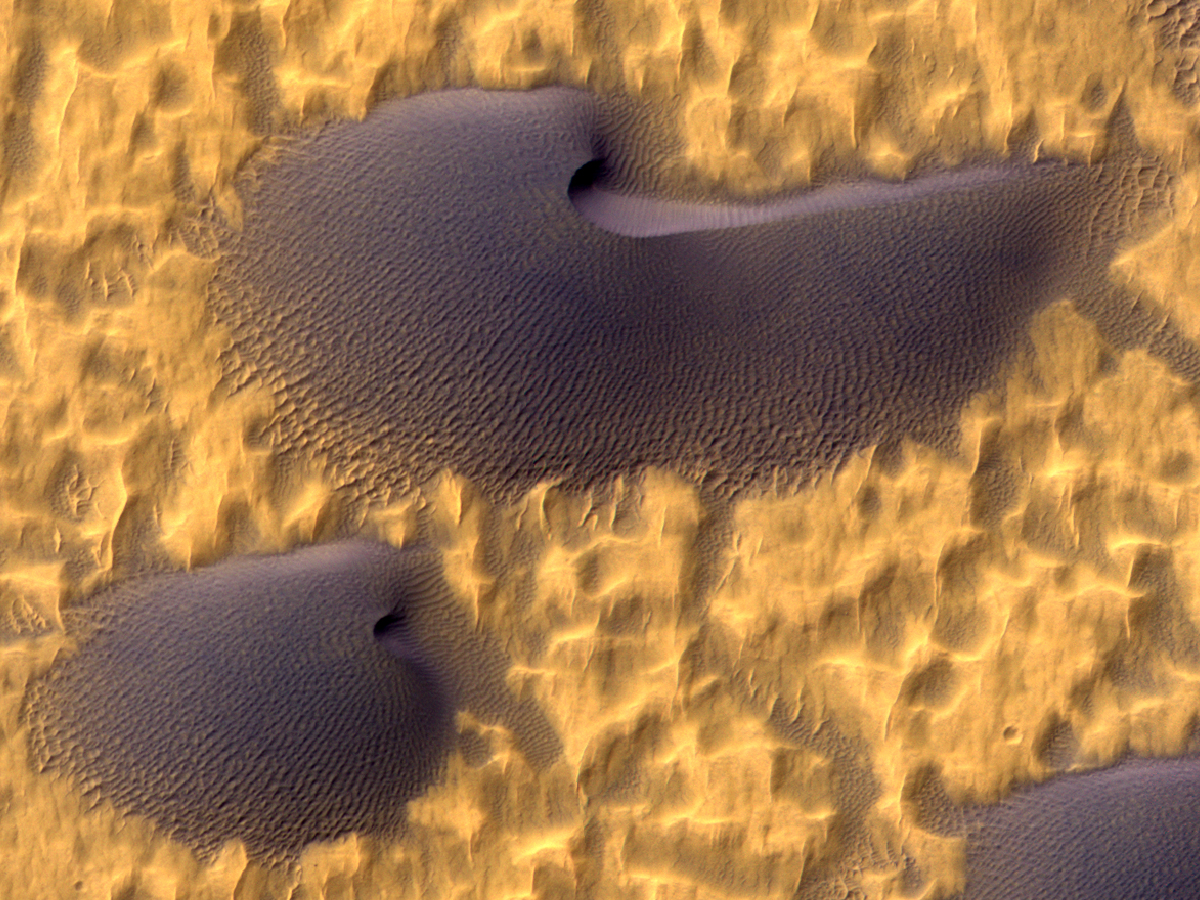Are you being oblique?

Relentless wind
October 11, 2013
Boulders on high
November 13, 2013 A piece of Mars: Barchan, or crescent dunes, are generally thought to form from winds blowing from a single direction. Reality isn’t usually that nice. Here are two barchans with crescent-shaped slip faces on their eastern (right) sides, indicating that the main dune-building winds blow from the west (left). However, ripples, an elongated dune arm, and steeper northern slopes hint at a secondary wind from the SE (lower right). (ESP_033272_1400, NASA/JPL/Univ. of Arizona)
A piece of Mars: Barchan, or crescent dunes, are generally thought to form from winds blowing from a single direction. Reality isn’t usually that nice. Here are two barchans with crescent-shaped slip faces on their eastern (right) sides, indicating that the main dune-building winds blow from the west (left). However, ripples, an elongated dune arm, and steeper northern slopes hint at a secondary wind from the SE (lower right). (ESP_033272_1400, NASA/JPL/Univ. of Arizona)




2 Comments
I always like these images. Maybe one might be seeing seasonal dominate wind directions? Strong winds flowing to the northeast in summer and weaker winds flowing toward the southeast in winter? *shrug* interesting no matter what.
Very possibly. From the modeling I’ve done, it seems that although there are often strong day to night shifts in wind patterns, it’s the slower seasonal patterns that are responsible for dune morphology. In that sense, these dunes are similar to the ones here on Earth. This is in the southern midlatitudes so I’d bet the SW wind (blowing to the NE) is a summer daytime wind. I’m not sure about the SE wind though — I’ve seen that in many places in the southern midlatitudes, so it’s a widespread wind, but the models don’t predict it. And the modelers I know can’t explain it. But there it is anyway.